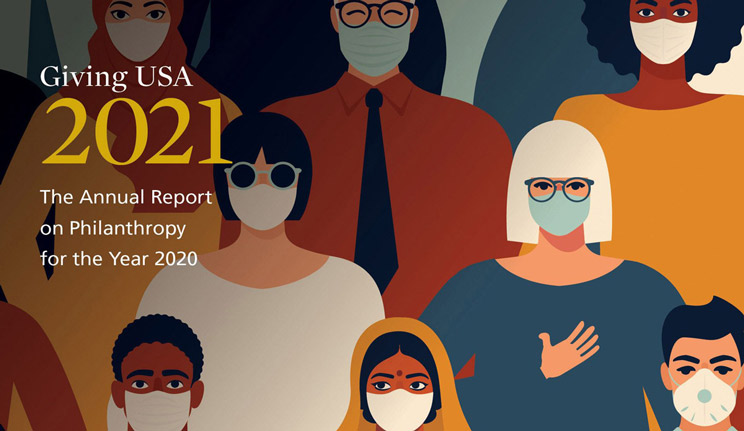In this month’s Philanthropy Matters, we take a look at equity and philanthropy through the lens of institutional equity, how research counts—and doesn’t—certain philanthropists, and emerging research on Muslim-American giving.
Like the world, philanthropy is in a liminal state. After crises in the past, we have seen new kinds of institutions emerge.
Our public health infrastructure was forged in the embers of the influenza pandemic a hundred years ago; the welfare state followed the Great Depression and the World Wars, as did the United Nations system. In all of these instances, philanthropy provided models, funding, or expertise that helped bring about these transformational innovations.
What then, of our time? Will we see novel institutions emerge to meet the grand challenges ahead?
Despite heroic efforts in responding to the pandemic and the associated economic and social crises, I don’t see a coming surge in new institutional models. Instead, when I do see institutions being embraced, I see a devotion to current institutions, efforts to shore them up, and campaigns to recommit to the norms and principles that serve as their bedrock. Like a rubber band, we are stretching, poised to snap back when the stress subsides.
We know that our emerging generations are skeptical of institutions. Spontaneous, movement-like engagement, often mediated by technology, is more relevant to our youth. The recent Global Citizen Concert, eclipsing the annual meeting of the UN General Assembly in whose shadow it was initially conceived, raised $1.1 billion for global poverty while engaging people worldwide.
Our Declining Donors study shows that younger households are giving less to nonprofit organizations. We are only beginning to research the extent of direct giving to individuals that is taking place on the digital media platforms that absorb increasing amounts of our civic time and attention.
Our institutions have clearly been affected by digital media, perhaps none more dramatically than the news. The media as an institution in countries around the world is no longer what it was, even though philanthropic models have emerged to buttress local and independent media. The media represent one prominent instance of institutional decline, partially propped up by philanthropy, but other institutions are poised to follow.
The president of the Rockefeller Foundation, Rajiv Shah, is arguing for a new Covid Charter because “the world today needs an entirely new paradigm for global development.” Shah calls on governments, businesses, and philanthropists to rectify the great divergence that the pandemic has exacerbated between the fortunes of the wealthy countries and the “developing world.”
He harkens to the Atlantic Charter, agreed to by Roosevelt and Churchill in 1941, prefiguring many institutions that formed the post-World War II international order that still hangs on today. Shah evokes the kind of visionary commitment to a better future that can emerge from the depths of crisis, but he does not seek new institutions.
The five commitments he calls for are all about mobilizing more resources for existing—some might say, flagging—institutions, so that we can address the urgent challenges inequitably presented by climate change and future pandemics.
Climate change alone is the kind of global existential threat that hasn’t seemed urgent since the height of the Cold War, when the prospect of nuclear war seemed quite possible. Sadly, arms control institutions no longer attract the attention of major donors.
Still, those who control weapons of mass destruction are small in number compared to the multitudes whose behavior contributes to climate change. Are our current institutions prepared for a problem of such scale? It does not seem that the Bezos Earth Fund or other recent large gifts for climate change are proposing novel institutional ways of dealing with it.
MacKenzie Scott has made considerable commitments to institutions that serve the less privileged and has done so with no strings attached. Established foundations have moved in this direction after years of more rhetoric than action. During the pandemic, they have moved aggressively to grant “General Operating Support.”
Many are also following the Ford Foundation in boosting giving to racial and social justice causes, as well as organizations led by people of color and other disadvantaged groups. These efforts are giving new energy to institutions and talent that have been neglected.
In the U.S., Philanthropy-Serving Organizations that nurture the broad ecosystem of civic engagement are focusing on repairing the fundamentals of civil society. The Council on Foundations is advancing a program on values-aligned philanthropy to combat the hate speech and extremism that can threaten the foundations of a rights-based democracy. Through a different lens, the Philanthropy Roundtable seeks to protect the freedom of donors to deploy their wealth as they see fit without being subject to external “mandates.”
In both cases, there is a concern that something fundamental is amiss in our society. Cherished institutions are in danger, so a lot of attention is going to shore up exiting institutions, even as we disagree on which ones are most important or even how to describe them.
Belonging to an institutionalized religion has long been robustly associated with more giving. During the pandemic, social distancing added more stress to congregations who could not gather. Ironically, the decline in religiosity among many established faiths comes at a time when certain convictions that used to be open to debate are becoming articles of faith. Anne Applebaum has dubbed this fervor the new puritanism because it seeks to cleanse institutions of harmful offenders.
As many organizations seek to decolonize themselves and uncover systemic biases, they are not proposing entirely new institutions. What is happening instead is an effort to purge pathologies that will right the ship and enable institutions to thrive more equitably.
This leaves me perplexed. In a time of the most profound discontinuity in the lives of most of living humanity, I would expect an abundance of creative proposals and experiments to create novel institutions. I would also expect to see philanthropy in the thick of it.
Maybe I am looking in the wrong places, or maybe I am missing something big. But still I wonder. Do you share my puzzlement?
Best regards,

Amir Pasic
Eugene R. Tempel Dean




